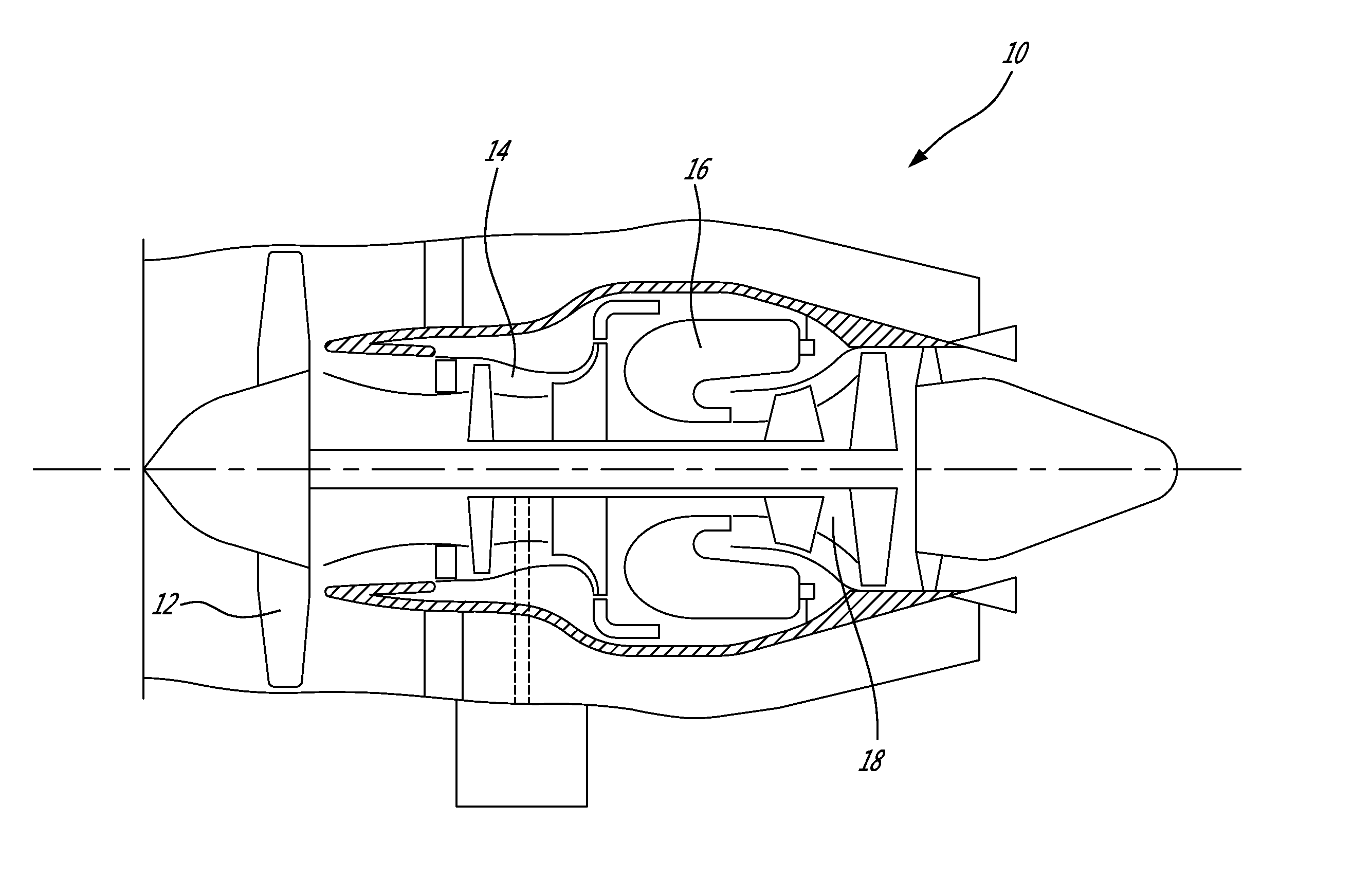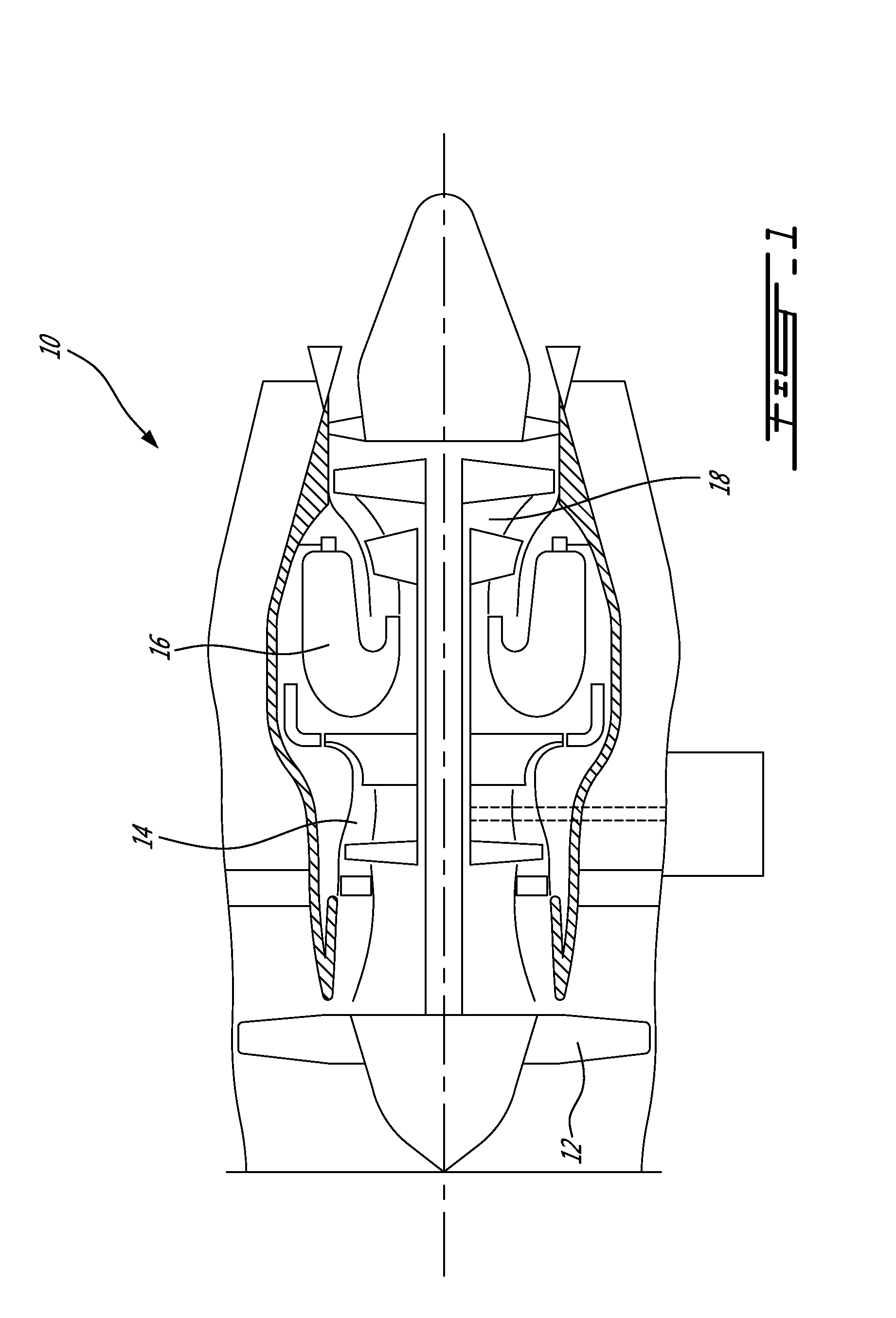Gas turbine engine rotor balancing
a technology of rotors and gas turbine engines, applied in the direction of propellers, propulsive elements, water-acting propulsive elements, etc., can solve the problems of uncontrollable material removal process and creation of further stress concentration zones, and achieve the effect of reducing weigh
- Summary
- Abstract
- Description
- Claims
- Application Information
AI Technical Summary
Benefits of technology
Problems solved by technology
Method used
Image
Examples
Embodiment Construction
[0013]FIG. 1 illustrates a turbofan gas turbine engine 10 of a type preferably provided for use in subsonic flight, generally comprising in serial flow communication a fan 12 through which ambient air is propelled, a multistage compressor 14 for pressurizing the air, a combustor 16 in which the compressed air is mixed with fuel and ignited for generating an annular stream of hot combustion gases, and a turbine section 18 for extracting energy from the combustion gases.
[0014]The fan 12, the compressor 14 and the turbine 18 each have rotary components, which need to be balanced. The rotary components may, for instance, be provided in the form of an integrally bladed rotor commonly referred to as an IBR or a Blisk, or in the form of a bladed rotor assembly comprising a set of individual blades detachably mounted in slots defined in a rim of the rotor disc. While the present balancing method will be hereinafter described in connection with an integrally bladed fan rotor, it is understoo...
PUM
| Property | Measurement | Unit |
|---|---|---|
| Stress optical coefficient | aaaaa | aaaaa |
Abstract
Description
Claims
Application Information
 Login to View More
Login to View More - R&D
- Intellectual Property
- Life Sciences
- Materials
- Tech Scout
- Unparalleled Data Quality
- Higher Quality Content
- 60% Fewer Hallucinations
Browse by: Latest US Patents, China's latest patents, Technical Efficacy Thesaurus, Application Domain, Technology Topic, Popular Technical Reports.
© 2025 PatSnap. All rights reserved.Legal|Privacy policy|Modern Slavery Act Transparency Statement|Sitemap|About US| Contact US: help@patsnap.com



